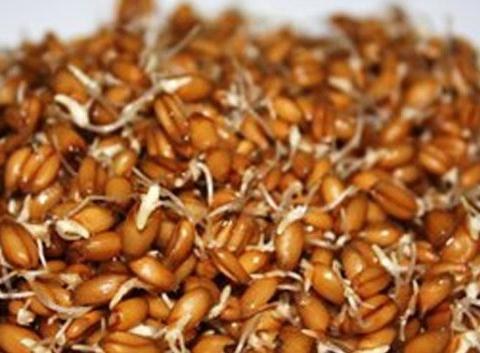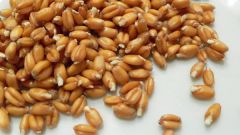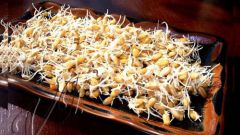Instruction
1
Take the daily rate of consumption of rye grains. As a rule, from 80 to 100-120 grams (4-5 tablespoons).
2
Loop grain, separating waste as well as immature and damaged grains.
3
Rinse rye grain is boiled or running water and pour into the prepared container. It can be a bowl, plate, low pot with a wide bottom. It is important that the utensils were made of glass, plastic or enameled (enameled should not be chipping and cracking). A layer of dry rye grains shall not exceed 2 cm
4
Fill the grain with clean water (preferably the melt or from the filter) so that the water barely covers the layer of rye.
5
Dishes with moist grains cover the top with cotton cloth or gauze (you can close a loose lid) and store in a dark or shaded place, but in any case not under direct sunlight. The air temperature must not exceed +22-24ºC.
6
During the day, check the capacity. If she closed the lid, then remove it for 10-15 minutes in order to ventilate and avoid the appearance of musty smell. As the drying of water add it to the initial level.
7
If, before this step, you did everything right, on the second day of your bean, you should see sprouts. The process of prokleivanija depends on the temperature of the air in the room and the quality of the raw grain.
8
Carefully, trying not to damage the fragile shoots, rinse the sprouted grains. You can do this by pouring boiling water directly into the container in which they are located, and gently stir them (drain the water 3-4 times and continue rinsing in fresh water). And gently shift the grain in a colander and rinse them under running water.
Sprouted rye is ready to eat.
Sprouted rye is ready to eat.
Note
Only shoots 1-2 mm in size (at least, not more than 3) have a maximum concentration of vitamins and mineral, biologically active substances. Therefore, you should not grow rye for too long.
Sprouted grains, rye seeds can be stored in the refrigerator for one day. Ready meals containing germinated rye grain can be stored in the refrigerator longer, unless they have honey or lemon juice.
Sprouted grains, rye seeds can be stored in the refrigerator for one day. Ready meals containing germinated rye grain can be stored in the refrigerator longer, unless they have honey or lemon juice.
Useful advice
If you choose to add sprouted grains to porridge, should not throw them in boiling milk or cooking along with the main content, it would be correct to add them to a ready-made porridge.





